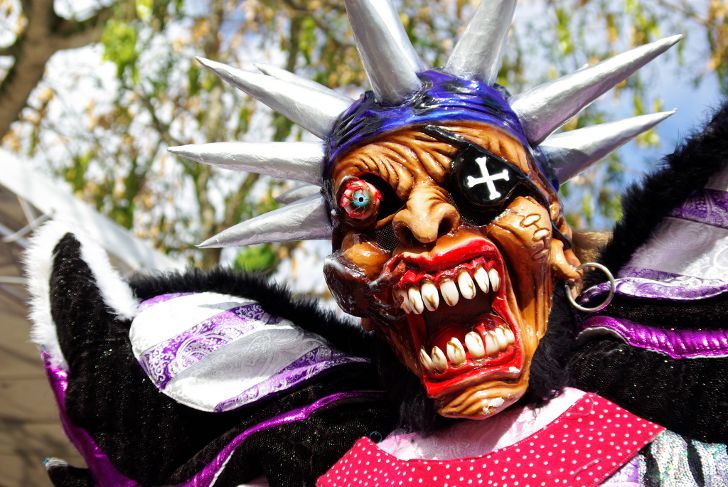The timing of most carnivals is synchronized with the religious period of Lent, but Dominican Carnival is an exception. It starts in early February and culminates on the Dominican Republic Independence Day (February 27) instead of Shrove Tuesday. The Carnival officially ends on the last day of February regardless of the Lenten calendar.
The Carnival in the Dominican Republic is arguably the oldest Carnival celebration in the Americas. It has been held since the mid-1500s. For local Christians, a colorful carnival was a way to escape from the rigid religious traditions, while for African slaves it was the only opportunity to feel free at least for a while. The celebration gained more splendor when the Dominican Republic gained its independence from Haiti in 1844.
The Carnival is celebrated in many cities throughout the Dominican Republic, but the largest celebration is held in Santo Domingo. Just like other Caribbean carnivals, it features flashy costumes, elaborate and colorful masks, and loud music. Numerous revelers dance to the rhythm of merengue and bachata mixed with reggaeton, hip-hop, and techno.
Dominican Carnival has unique allegorical characters representing local traditions. The central one is Diablo Cojuelo (Limping Devil). Just because he plays one of the main roles in the festivities doesn’t mean that the Carnival is an event to worship the Devil. On the contrary, Diablo Cojuelo is a satire of the Devil aimed to mock him. Each town and city in the Dominican Republic has its own version of the character, but all versions have several things in common such as a mask, a showy suit made of satin, sleigh bells, and a vejiga (an animal bladder) used to hit people in the streets.
Other stock characters include Myth representing the Spaniards when they came to the island; Roba La Gallina (Stealer of the Chicken), a men dressed in women’s clothes; Califé, a character that portrays the people’s voice; Los Indios (the Indians), a group of people portraying ingenious Dominicans; and others.
Some of the largest Carnival parades in the Dominican Republic are held in La Vega, Monte Cristi and Santo Domingo. The La Vega parade features over 20 different units, each dressed to a particular theme. The Monte Christi parade is not big, but it is very peculiar. It features two big groups, Los Civiles, wearing casual clothes, and Los Toro, sporting flashy costumes and pig masks.
As we’ve already mentioned, the Santo Domingo parade is the country’s largest carnival celebration. It is held in the capital of the Dominican Republic to celebrate the end of the carnival season and the country’s Independence Day. The National Parade features groups and costumed characters from all over the country and a large display of military power.

Photo by Sally Walton




